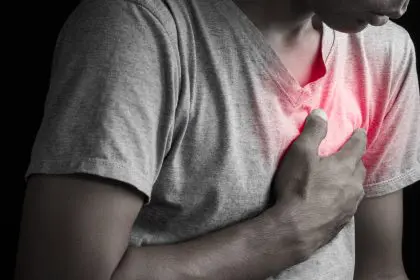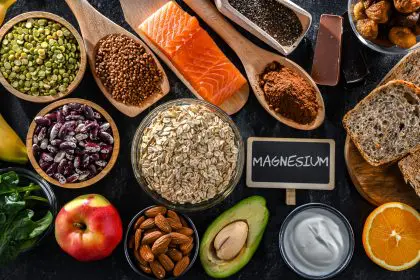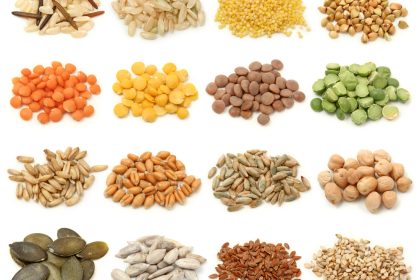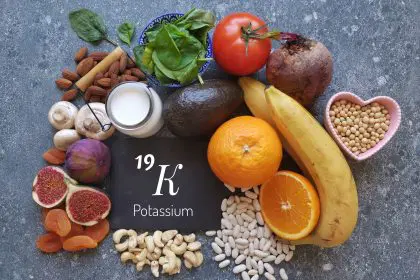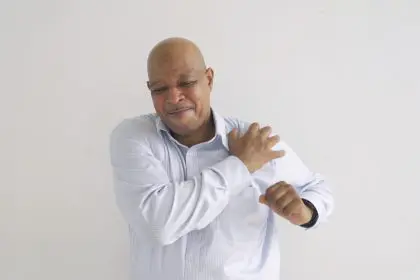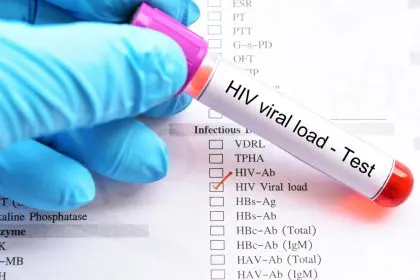That fluttering sensation in your chest—the feeling that your heart is skipping beats, racing, or pounding harder than normal—can be both uncomfortable and concerning. Heart palpitations, while often harmless, can significantly impact your quality of life when they occur frequently.
Understanding heart palpitations
Heart palpitations describe any awareness of your heartbeat outside your normal cardiac rhythm. This heightened awareness might feel like your heart is:
Beating too rapidly (tachycardia) Skipping or adding beats (arrhythmia) Pounding unusually hard against your chest wall Fluttering irregularly in your chest Flip-flopping or doing somersaults
Palpitations can occur during activity or rest, while sitting or lying down, and may last for seconds, minutes, or longer. Some people feel these sensations in their throat or neck as well as their chest.
Most palpitations, particularly occasional episodes, prove benign. However, persistent or severe palpitations accompanied by dizziness, chest pain, or shortness of breath warrant medical evaluation to rule out underlying heart conditions.
Common triggers of heart palpitations
Identifying what triggers your palpitations represents the first step in managing them effectively. Common culprits include:
Emotional states: Anxiety, stress, fear, and panic can trigger adrenaline release, directly affecting heart rate and rhythm.
Stimulants: Caffeine, nicotine, alcohol, and certain medications increase heart rate and may trigger palpitations in sensitive individuals.
Physical exertion: Exercise naturally increases heart rate, though palpitations typically resolve quickly afterward.
Hormonal changes: Fluctuations during pregnancy, menstruation, perimenopause, and menopause can trigger palpitations in women.
Medical conditions: Thyroid disorders, anemia, low blood sugar, fever, dehydration, and electrolyte imbalances may cause palpitations.
Dietary factors: Food sensitivities, MSG, and large meals can trigger palpitations in some people.
Medications: Some cold medicines, asthma inhalers, and prescription drugs list palpitations as potential side effects.
Maintaining a symptom journal noting when palpitations occur and what preceded them can help identify your specific triggers.
8 ways to stop heart palpitations
- Practice deep breathing techniques
The vagus nerve connects your brain to your heart, and stimulating this nerve helps regulate heart rhythm. Deep breathing exercises effectively activate the vagus nerve, potentially stopping palpitations quickly.
Try this technique: Sit quietly and comfortably. Breathe in slowly through your nose for a count of four, feeling your abdomen expand. Hold briefly, then exhale slowly through your mouth for a count of six. Repeat for several minutes, focusing entirely on your breath.
This controlled breathing activates your parasympathetic nervous system—your body’s natural calming mechanism—reducing stress hormones that may contribute to palpitations.
- Try the Valsalva maneuver
This technique increases pressure in your chest, stimulating your vagus nerve and potentially resetting your heart rhythm. While simple, it remains remarkably effective for many people experiencing palpitations.
To perform the Valsalva maneuver: Take a deep breath and hold it. Bear down as if having a bowel movement and hold for about 10-15 seconds, then release. This action creates pressure in your chest that affects your vagus nerve.
This technique works particularly well for certain types of rapid heartbeats but might not help with all palpitation types. Use it cautiously if you have heart disease or high blood pressure.
- Splash cold water on your face
The mammalian dive reflex—an automatic response when cold water contacts your face—can rapidly slow your heart rate. This evolutionary adaptation helped our ancestors survive in water by conserving oxygen.
Simply splashing cold water on your face or placing an ice pack on your forehead for 20-30 seconds can trigger this reflex, potentially stopping palpitations quickly.
For a more portable option, keep a cold water bottle with you and press it against your face when palpitations begin.
- Address electrolyte imbalances
Electrolytes—particularly potassium, magnesium, and calcium—play crucial roles in proper heart function. Imbalances in these minerals can trigger or worsen palpitations.
Potassium-rich foods include bananas, oranges, potatoes, spinach, and avocados. Magnesium sources include dark chocolate, nuts, seeds, and leafy greens. Calcium comes from dairy products, fortified plant milks, and leafy greens.
Sports drinks with electrolytes can help during intense exercise or illness when electrolyte depletion might occur. For chronic palpitations, focus on a balanced diet rather than relying on supplements, which should only be used with medical supervision.
- Eliminate stimulants
Caffeine, nicotine, and alcohol all affect your cardiovascular system and can trigger palpitations in sensitive individuals.
Consider eliminating these substances completely to determine if they contribute to your symptoms. If complete elimination seems challenging, try reducing consumption gradually and avoiding them entirely during high-stress periods when palpitations might be more likely.
Remember that caffeine hides in many products beyond coffee—including tea, chocolate, energy drinks, and some medications. Read labels carefully during your elimination experiment.
- Stay hydrated
Dehydration concentrates your blood, making your heart work harder to circulate it throughout your body. This increased workload can manifest as palpitations.
Aim for approximately 2 liters (about 8 cups) of water daily, adjusting for activity level, climate, and individual needs. Your urine should be pale yellow—darker urine suggests dehydration, while colorless urine might indicate overhydration.
Space fluid intake throughout the day rather than consuming large amounts at once, which can temporarily strain your cardiovascular system.
- Practice regular stress management
Chronic stress keeps your sympathetic nervous system (fight-or-flight response) activated, potentially contributing to recurrent palpitations.
Effective stress management techniques include meditation, progressive muscle relaxation, yoga, tai chi, regular exercise, adequate sleep, and activities you find personally calming like gardening, art, or time in nature.
Consistency matters more than duration—even 10 minutes of daily meditation can significantly reduce stress hormones over time.
- Avoid large meals
Digesting large meals diverts blood flow to your digestive system and can trigger palpitations in some individuals. The stomach’s expansion after a large meal may also physically impact nearby organs, including your heart.
Try eating smaller, more frequent meals throughout the day rather than three large ones. This approach maintains more stable blood sugar and creates less digestive demand at any one time.
Additionally, limit fatty foods which require more digestive effort and remain in your stomach longer than other foods.
When to seek medical help
While most palpitations prove harmless, certain situations warrant prompt medical attention:
Seek emergency care if palpitations occur with: Chest pain or pressure Severe shortness of breath Dizziness or fainting Unusual sweating Pain radiating to your jaw, neck, or arm
Schedule a non-emergency evaluation if you experience: New or different palpitations Palpitations that occur regularly Heart rate consistently over 100 beats per minute at rest Palpitations that significantly interfere with daily activities Family history of heart disease with your palpitations
Modern diagnostic tools like electrocardiograms, Holter monitors, and event recorders help healthcare providers determine whether palpitations stem from harmless triggers or require medical intervention.
Long-term prevention strategies
Beyond immediate intervention techniques, several lifestyle approaches help prevent recurrent palpitations:
Maintain healthy weight: Excess weight increases cardiac workload and may contribute to structural changes that promote palpitations.
Exercise regularly: Moderate physical activity strengthens your heart and improves its efficiency. Start gradually if previously inactive, and choose activities you enjoy to maintain consistency.
Prioritize good sleep: Sleep deprivation stresses your entire body, including your cardiovascular system. Aim for 7-9 hours of quality sleep nightly.
Consider magnesium supplementation: Under medical supervision, some people benefit from magnesium supplements, particularly those with documented deficiencies.
Address underlying anxiety: For palpitations triggered primarily by anxiety, cognitive behavioral therapy, mindfulness practices, or anti-anxiety medications might help break the cycle.
While occasional heart palpitations typically represent normal physiological responses to stress, stimulants, or activity, recurrent episodes deserve attention. By identifying your personal triggers and applying these techniques, you can often reduce both the frequency and intensity of palpitations, improving your quality of life and cardiac wellbeing.
Remember that particularly for those with existing heart conditions, developing a palpitation management plan with your healthcare provider remains essential for both safety and effectiveness.
SEO Title: 8 effective ways to stop heart palpitations at home
SEO Meta Description:
Tags:
Permalink: people.com/health/effective-ways-stop-heart-palpitations-home





